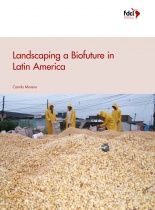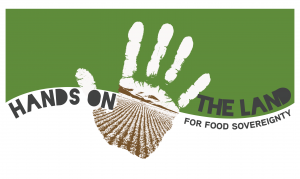
Over the course of the last decade, references to a bioeconomy have steadily grown in relevance, ranging from institutional discourses involving international actors and agencies to the formulation of national strategies and securing its role in wider agendas, such as the 2030 Sustainable Development Goals (SDGs) and global climate change policy.
It is difficult to pinpoint an exact definition for the term bioeconomy. In its ever more frequent usage, it often, and to a great extent, shares common traits with what is referred to as a circular, green or low-carbon economy, each employed alone or combined depending on the relative emphasis on certain aspects or different contexts. As a concept, the bioeconomy is not new. By the end of the 20th century, the term was limited almost exclusively to academic debate, but it started to gain prominence and enter policy discussions through the application of “bioeconomic models”, the use of mathematical calculations to administrate quota management systems over limited natural resources, for example, in fisheries. This phenomenon was rooted in a broader social and political change occurring in environmental policy at the time, which combined the rise of ecological economics with neoliberalism. Since then, the term has spread far beyond natural resource management, has been incorporated into many other fields, and its use redefined. The most relevant thread follows how the term was steadily incorporated into the development and innovation debates in Europe during the 90s.
In the 21st century, the term bioeconomy has gained increased importance in the discourse led by institutional actors, starting to appear within the context of national and regional strategies. Germany was a pioneer in this debate with the creation, in 2009, of a National Council on Bioeconomy, which formulated regional roadmaps and a national strategy (released in 2010 and updated in 2012) to include sustainable energy.
Landmark documents that punctuate the international process include the OECD’s (2009) The Bioeconomy to 2030: designing a policy agenda; the European Commission’s (2012) Innovating for Sustainable Growth: A Bioeconomy for Europe; and the United States’ (2012) National Bioeconomy Blueprint.
While the growth of the bioeconomy can be largely attributed to biotechnology through the development of foundational technologies, such as genetic engineering and DNA sequencing, tomorrow’s bioeconomy relies on the expansion of emerging technologies, such as synthetic biology (the direct engineering of microbes and plants), proteomics (the large-scale study and manipulation of proteins in an organism), and bioinformatics (computational tools for expanding the use of biological and related data), as well as “new technologies as yet unimagined”.
In addition to its potential to spur growth, the bioeconomy is promoted as a way to offer wide societal benefits: longer, healthier lives; reduced dependency on oil; addressing key environmental challenges; transforming manufacturing processes; and increasing the productivity and scope of the agricultural sector while growing new jobs and industries.
Much beyond sectoral policies or strategies, the bioeconomy entails a technological and political agenda for the future.
Content
Introduction 4
1 Into the biofuture 6
2 Bioeconomy in context: reframing the development discourse 8
Designing an industrial policy in a globalized world 8
Low carbon bioeconomy? 9
Policy landscape or landscape governance? 10
3 Latin America: breeding grounds for a bioeconomy? 12
Policy shaping for the bioeconomy 13
Partnering for the bioeconomy: EU-Latin America 13
Enabling environments 15
4 Bioeconomy on the ground in Brazil: ethanol 2G & Braskem I’m green™ 22
Ethanol production in Brazil: the historical context 22
Minimizing land impacts with biotechnology 23
Braskem: „I’m green™“ 24
5 Concluding remarks 26
Zur Kampagne „Hands on the Land for Food Sovereignty“
Impressum
Imprint
Published by: The Centre for Research and Documentation Chile-Latin America /
Forschungs- und Dokumentationszentrum Chile-Lateinamerika e. V. – FDCL
Gneisenaustrasse 2a, D-10961 Berlin, Germany
Tel: +49 30 693 40 29 / Fax: +49 30 692 65 90
E-mail: info@fdcl.org / Internet: www.fdcl.org
Author: Camila Moreno
Cover picture: Eine Ladung von vermutlich Gen-Soja in Santos, Sao Paulo, Brazil |Foto: Márcio Garoni (c BY-NC 2.0)
Layout: STUDIO114.de | Michael Chudoba
Supported by Engagement Global under commission from the German Federal Ministry for Economic Cooperation and Development (BMZ) and with financial support from the European Union.
The content of this publication is the responsibility of the publisher alone; the positions presented here do not reflect the views of Engagement Global gGmbH, the Federal Ministry for Economic Cooperation and Development or the European Union.
This brochure is licensed under a Creative Commons Attribution – NonCommercial – ShareAlike 4.0 International license (CC BY-NC-SA 4.0).
c FDCL-Verlag, Berlin, December 2016

